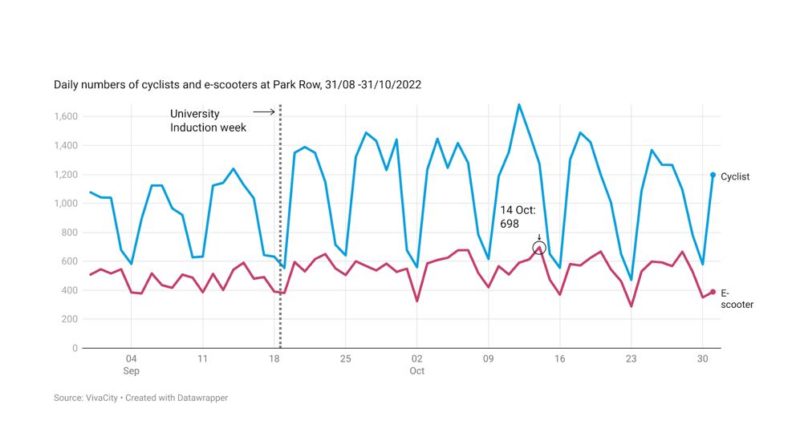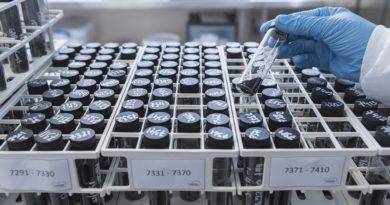eScooters stake claim in micromobility ecosystem in Bristol study
A study managed by the University of Bristol, utilising AI vehicle detection software from Vivacity Labs, has found use of eScooters are increasingly staking a strong claim to being part of the micromobility ecosystem in urban spaces.
The vehicle detection software showed that, on weekends, average counts of eScooters were at similar levels than cycle use in October, sometimes even surpassing bike use in the early afternoon in the University city.
Overall the usage does remain substantially lower than cycle use, averaging around half the usage during the week when commuters will be more active. The data, gathered anonymously and in real-time, was collated using Vivacity’s AI-powered sensors from 30th August onwards. The sensors recorded 523 eScooters on average per day throughout the period compared to 1,054 cyclists.
For cyclists more electric scooters on the roads could actually have a positive knock on effect for safety; elsewhere proliferation of scooters has resulted in the creation of better infrastructure for all vulnerable road users.
The data was also able to determine some of the habits of various road users, finding, despite what sections of the press and social media may have you believe, that only a small minority of cyclists (5.5%) and electric scooter riders (3.6%) were found to be on the pavements.
Bristol’s latest round of electric scooter trials are in fact set to end this month and so the data collation is particularly useful to advising local and central Government transport policy makers. It was suggested in the last Queen’s speech that electric scooters are set to be fully legalised, however much has changed in Government since that time, including those ministers tasked with transport.
Dr Nikolai Bode, lead researcher at University of Bristol, said: “Our aim is to understand general trends in uptake of eScooters in terms of volumes, peak times and where in the road space e-scooters are used. In addition, we are interested in exploring interactions between eScooters and other road users, in particular pedestrians.
“From these initial findings, for example, we can see that a low proportion of e-scooters are using the pavement and we can make the assessment that this is linked to most e-scooters using the cycle lane along Park Row eastbound leading towards Bristol city centre.”
Mark Nicholson, CEO of VivaCity, added: “Our sensors have the unique ability to automatically detect electric scooters anonymously and assess their pathways and interactions with road users. As councils and transport authorities continue to assess e-scooter use ahead of potential Government legislation in 2024 to include e-scooters as a vehicle category, this anonymous data can provide crucial insight into infrastructure use, trends and facilitation.
“By working with the University of Bristol, we’re excited to provide previously unknown insight into interactions with other road users, road usage and enable data-led decisions about road space design and regulation.”
The University of Bristol is one of the first to use this new feature in its analysis of road trends. To find out more about VivaCity and its sensors, visit the website here, or tune into CI.N’s podcast with Mark Nicholson here.



